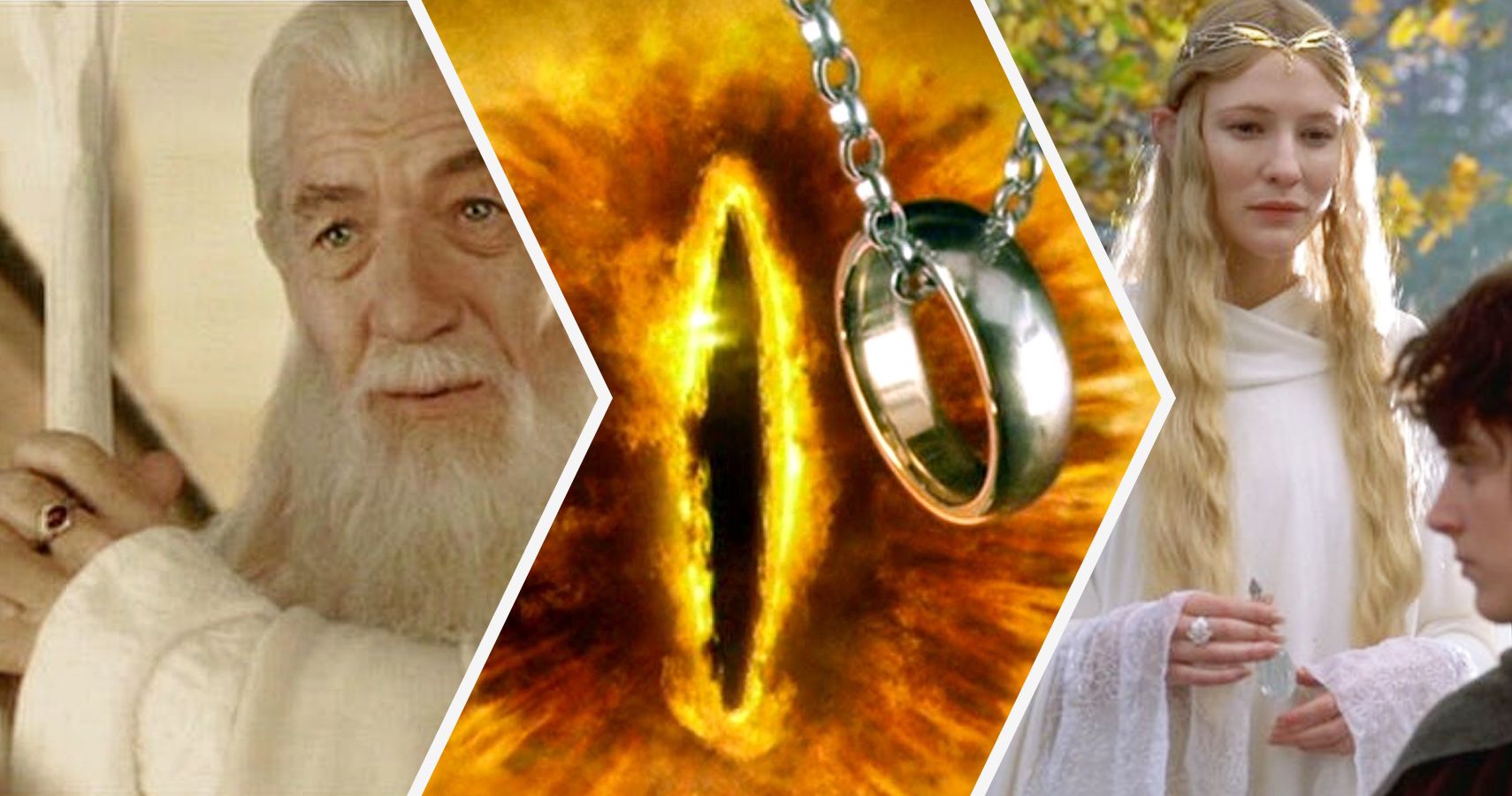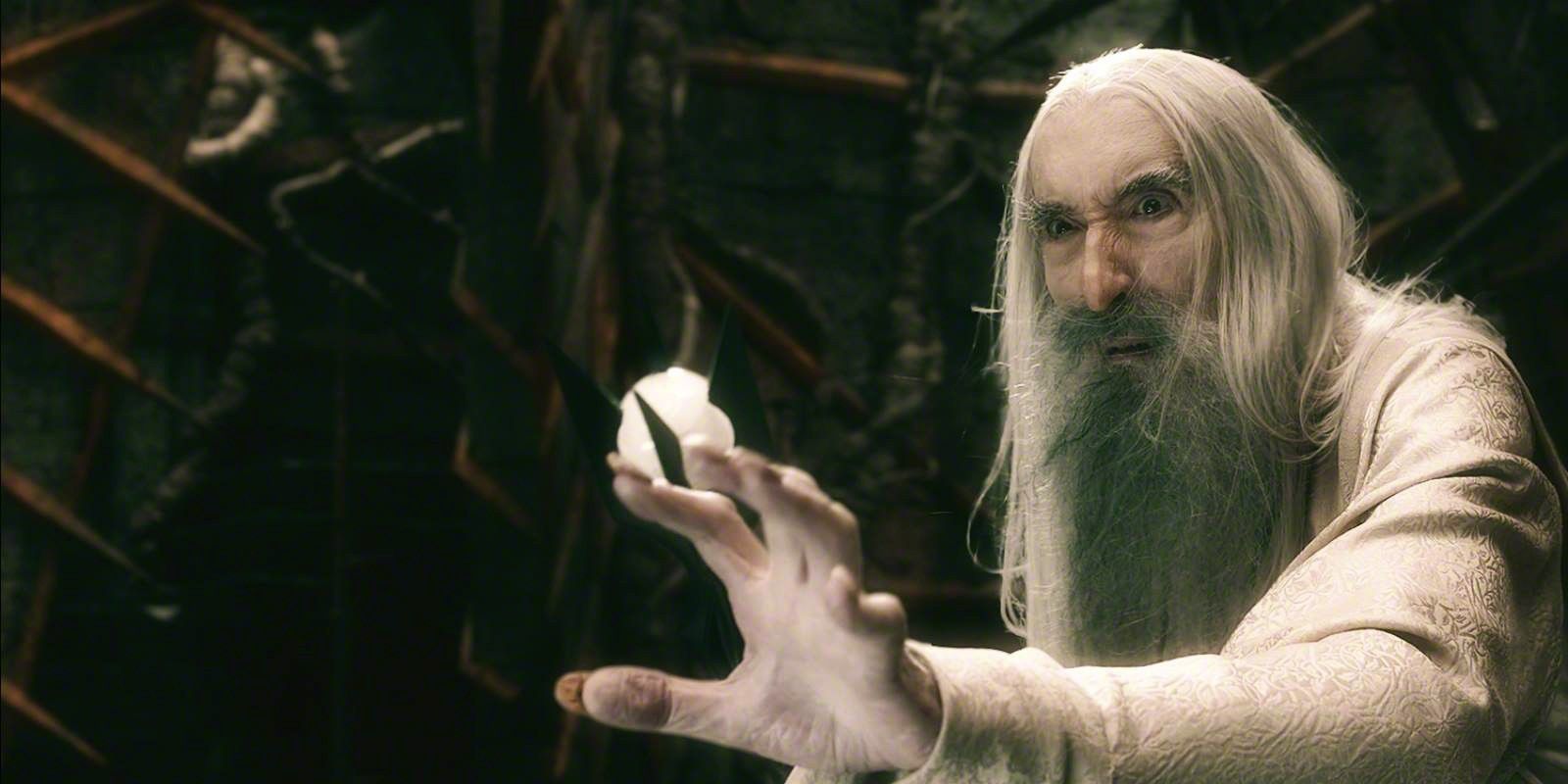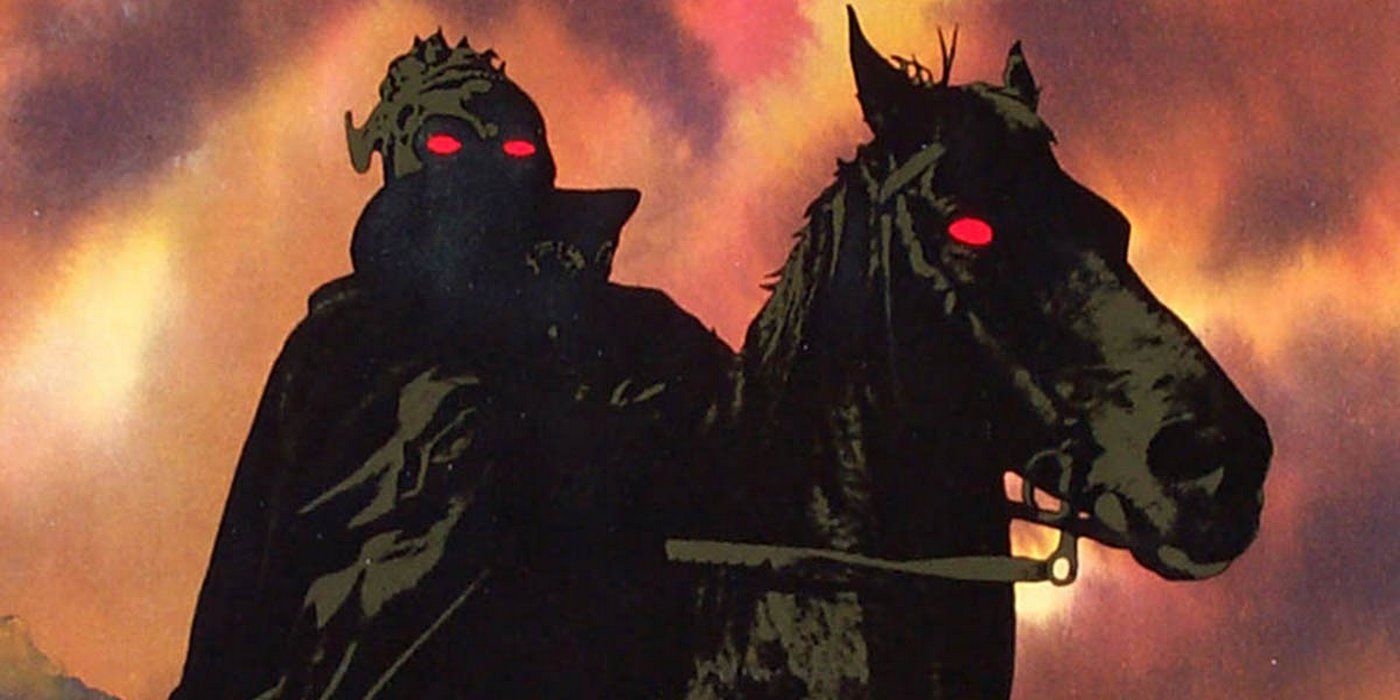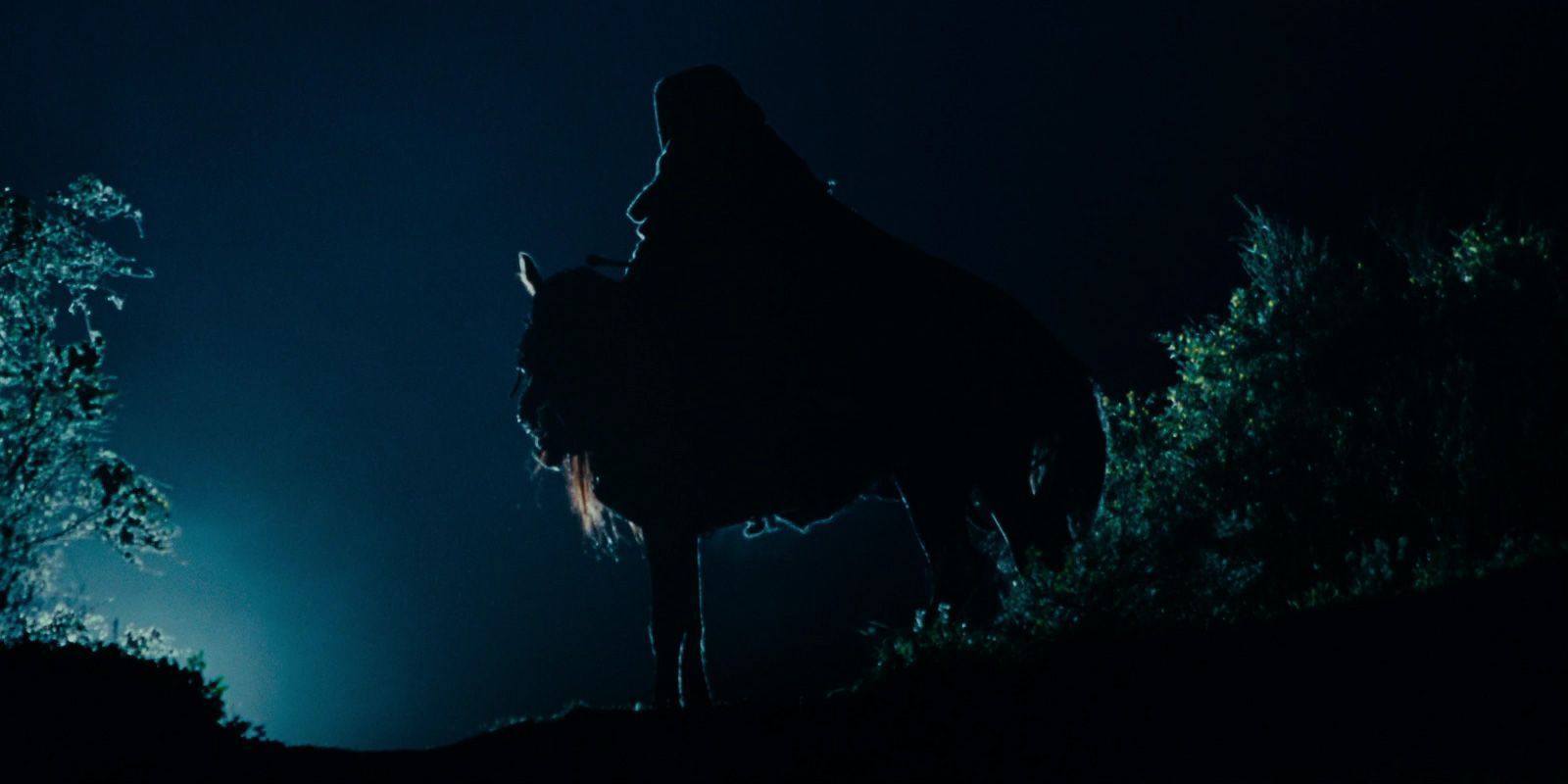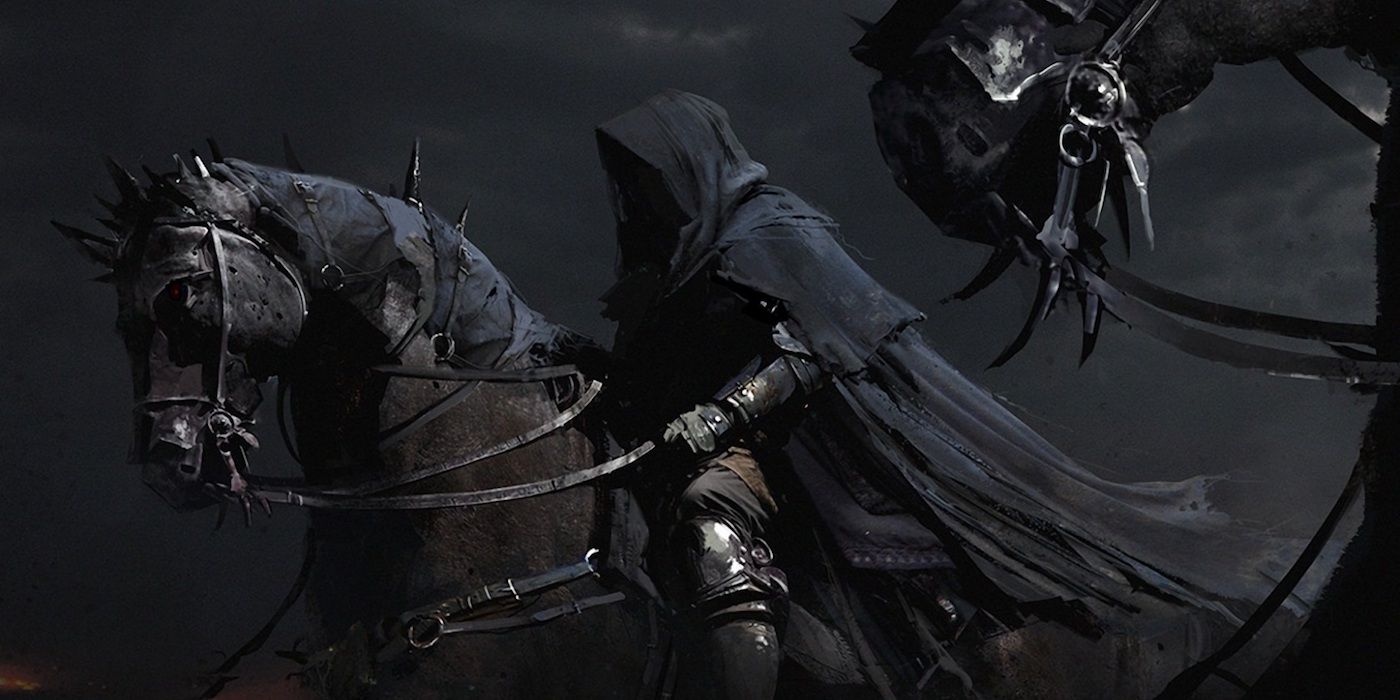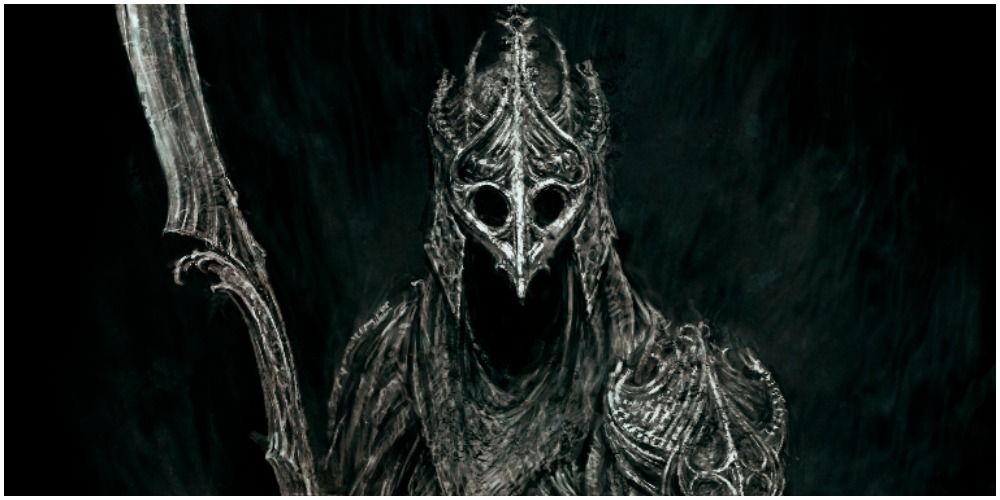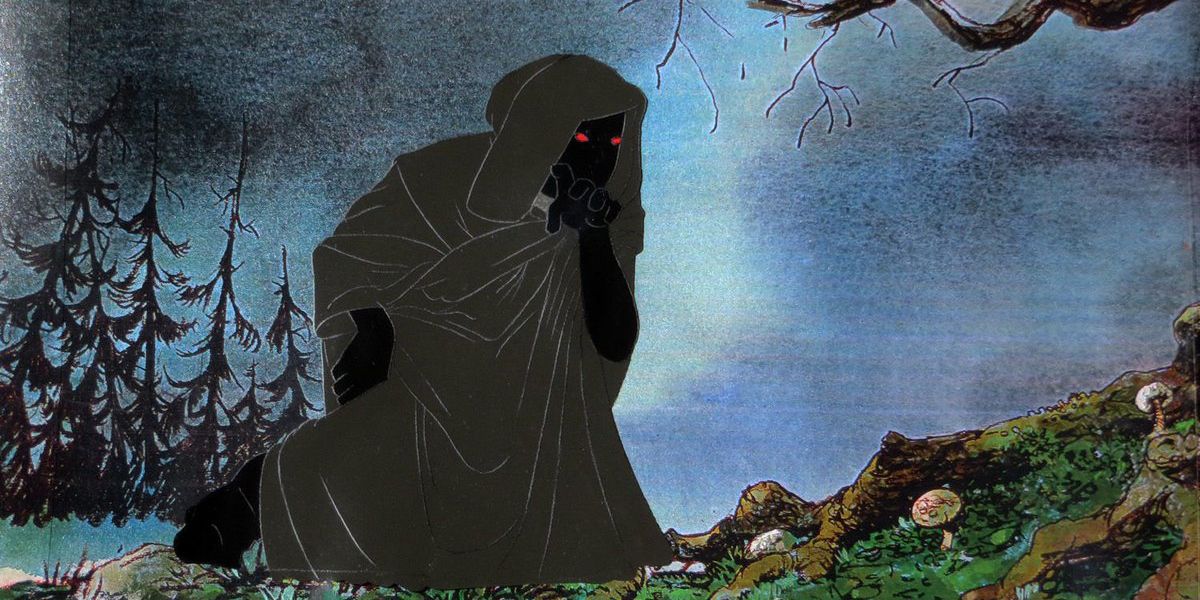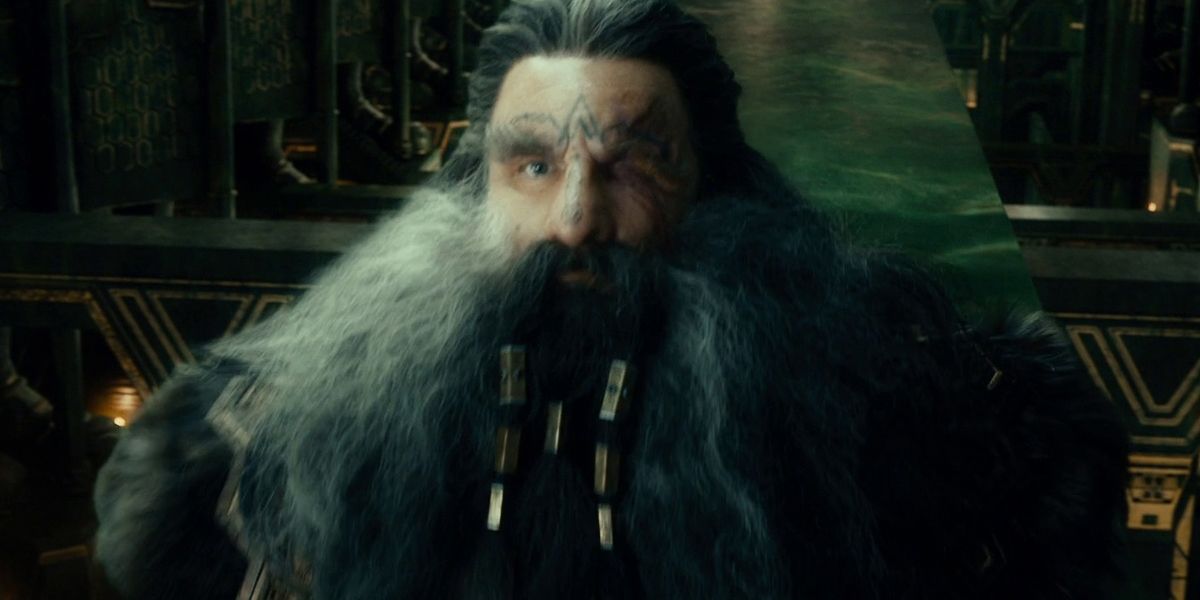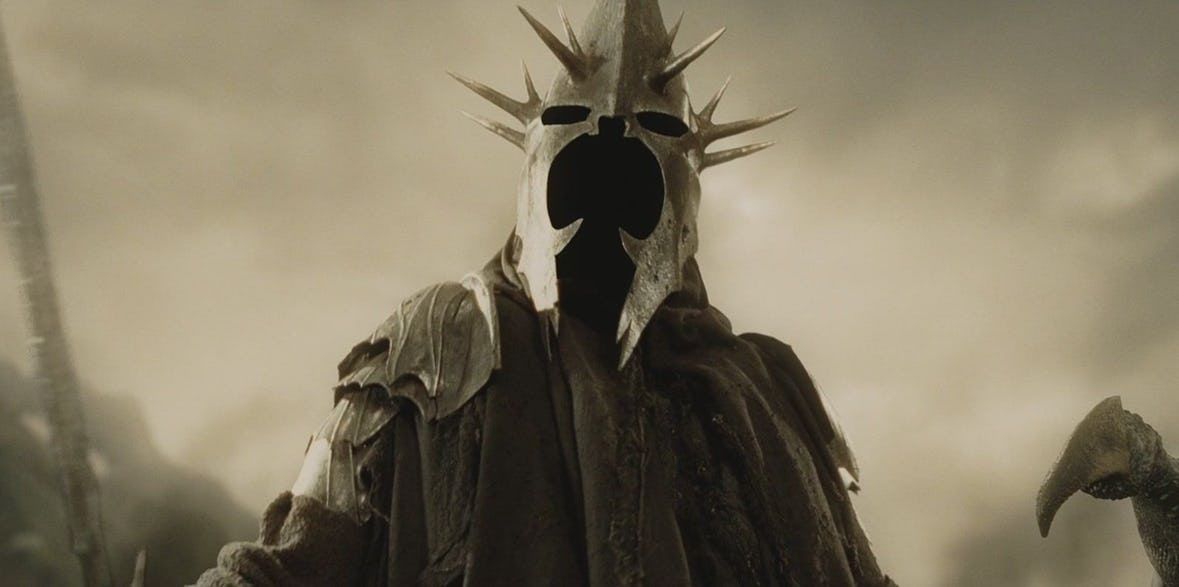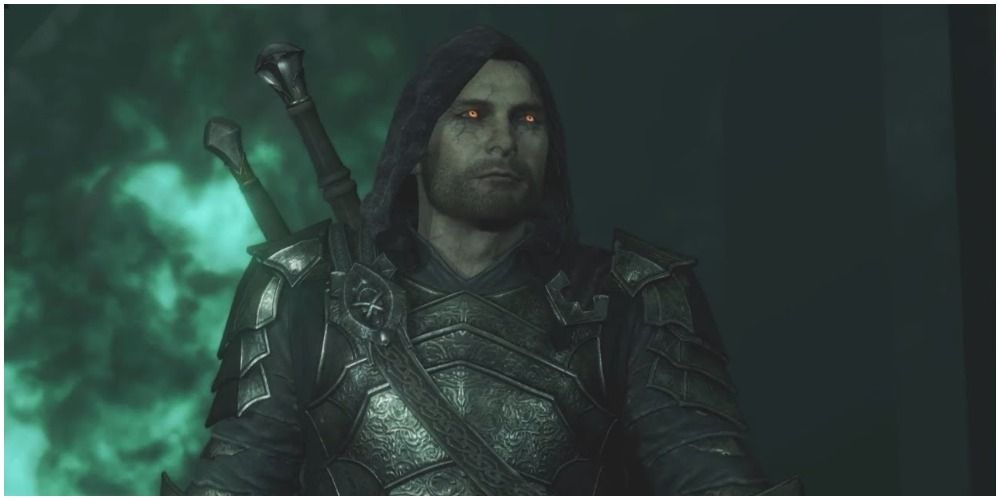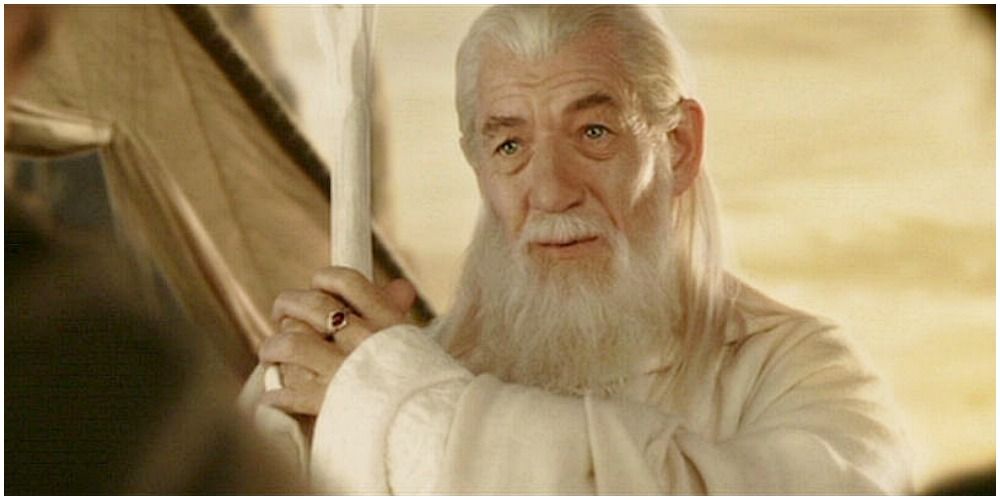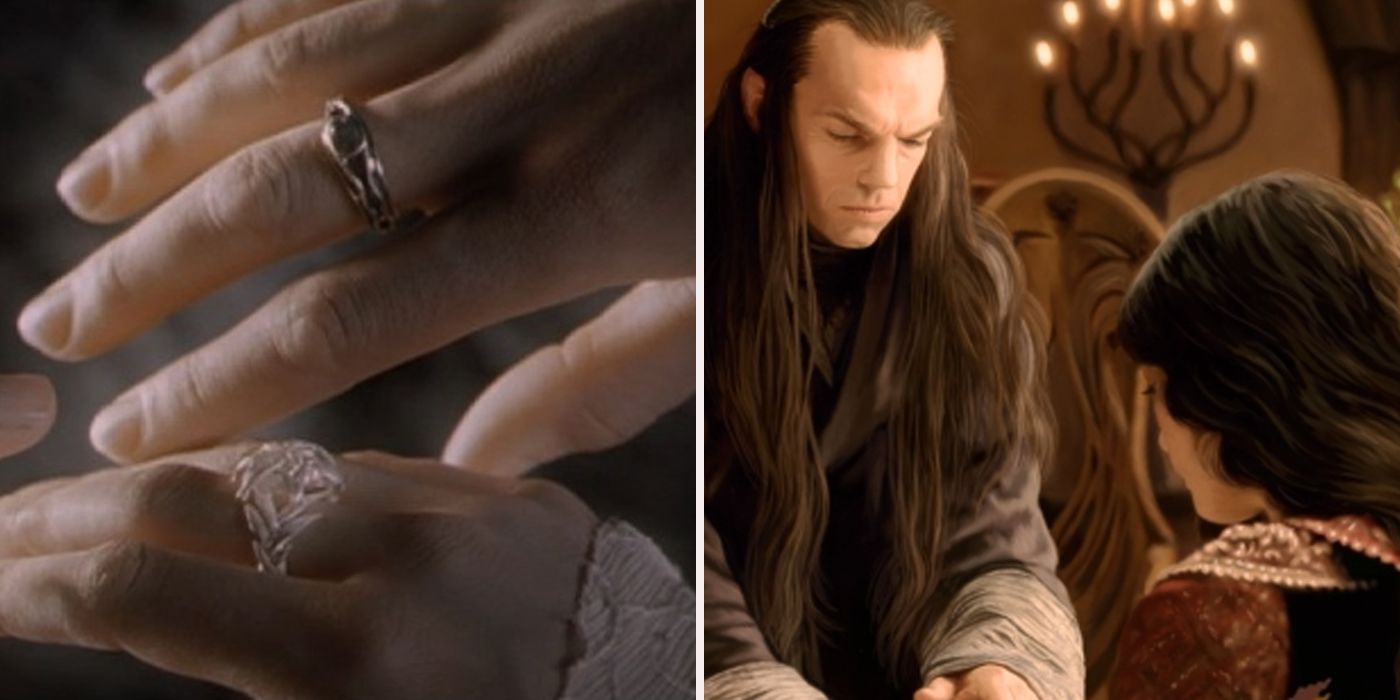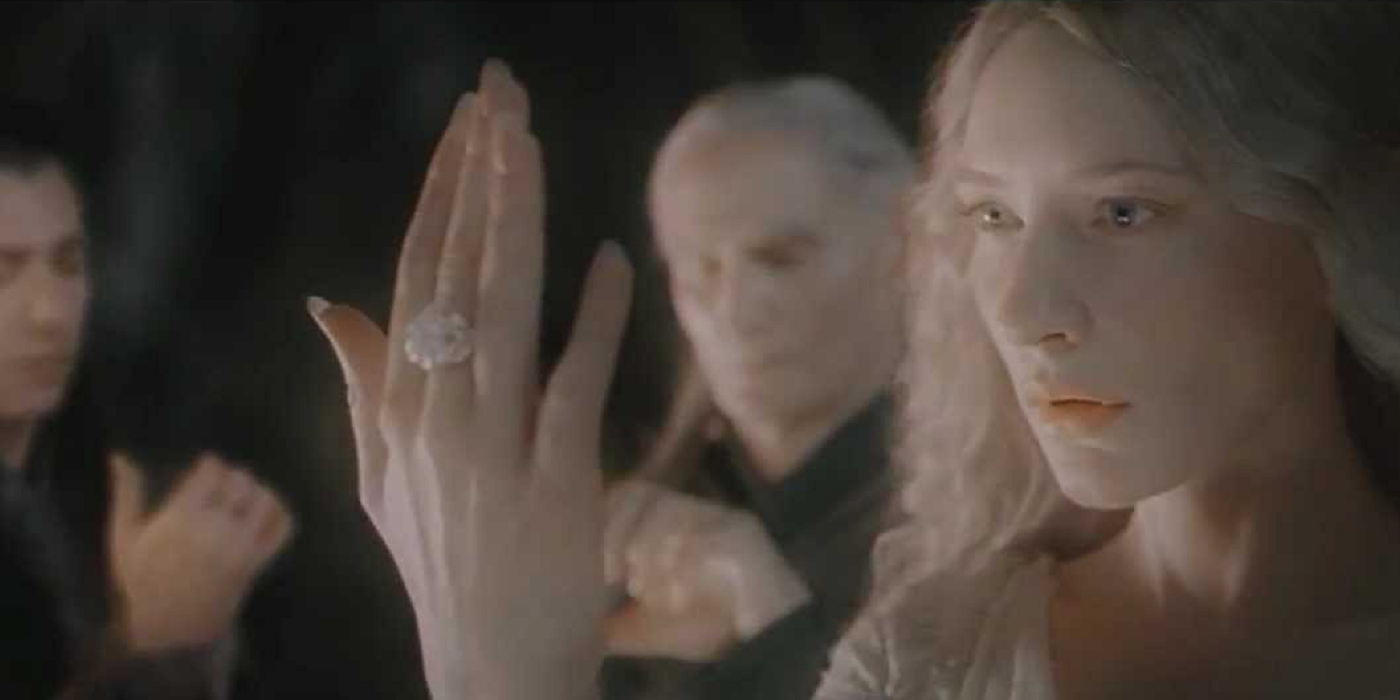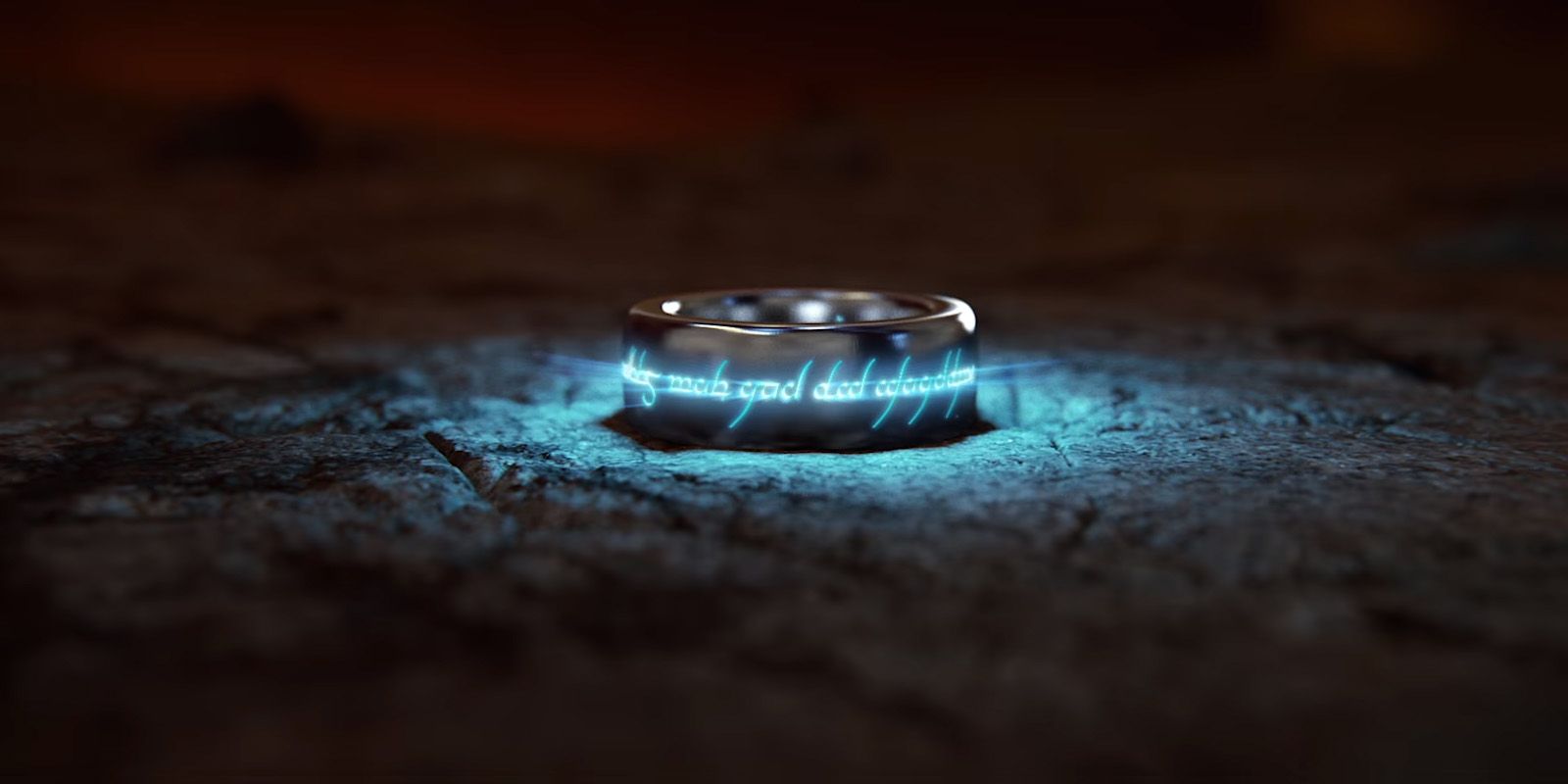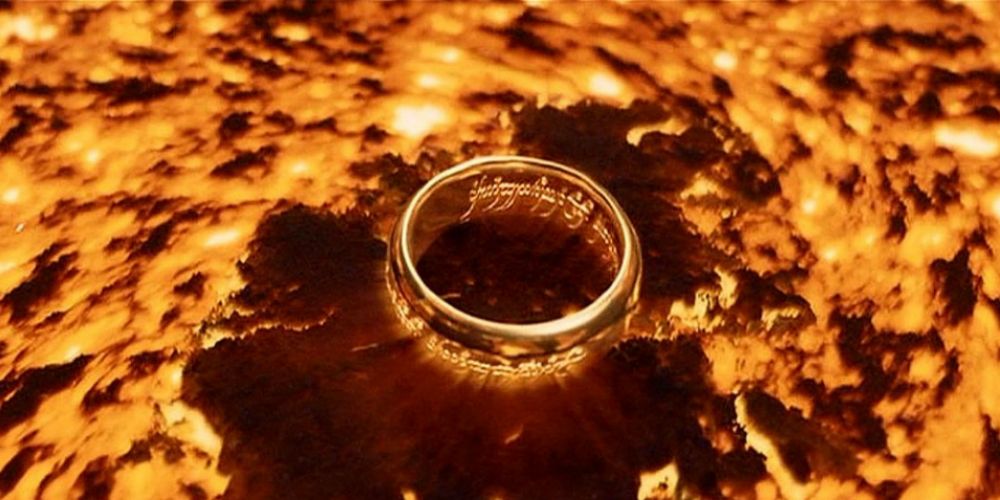The Rings of Power were a late addition to the world of Middle-earth. The first ever ring introduced to the story was the one found by Bilbo in Gollum's cave during The Hobbit.
J.R.R. Tolkien did not consider the ring to have any backstory of its own and was just a useful magical trinket that aided Bilbo on his journey. It wasn't until he began writing The Lord of the Rings that the truth behind the One Ring began to form, which resulted in later printings of The Hobbit being changed to reflect this new version of the lore.
The story of Middle-earth became overrun with magical rings, with the Second and Third Ages being defined by conflicts over them.
The One Ring was deemed to be so powerful that entire world wars were fought over it, while the Elven Rings helped the eldest people of Middle-earth to delay the diminishing of their power and maintain realms that were safe from the reach of Mordor.
J.R.R. Tolkien purposely obscured the details of the power of each ring, so as to keep them mysterious. There have been numerous adaptations of The Lord of the Rings, which have offered greater insight into the powers and weaknesses of each Ring.
We will be looking at the various magical rings that have appeared throughout the various canons and stories of Middle-earth, including the ones that were not made by Tolkien, such as the ones that appeared in the tabletop RPG and video games.
Here are The 15 Most Powerful Rings In Lord Of The Rings, Ranked!
15. The Lesser Rings
The ring that Bilbo found in The Hobbit originally had no backstory and was just a magical item that he found on his adventure.
When J.R.R. Tolkien revised The Hobbit in order to bring it closer to the story of The Lord of the Rings, he had to think of a reason as to why Gandalf wouldn't become suspicious, as all of the other magical rings (except for the One Ring) were accounted for at that time.
The Lord of the Rings introduced the concept of lesser rings, which contained minor magical powers and were only created by the elven smiths as part of their training before they worked on the Rings of Power.
This was discussed in The Silmarillion, though we only learn of the creation of the lesser rings and not of what happened to them after Sauron revealed his true nature. It's possible that Sauron claimed them, as he did with many of the Rings of Power.
However, it seems that the lesser rings did not fall under Sauron's dominion, as Gandalf did not oppose Bilbo owning one. It's also possible that the magic of these rings survived the destruction of the One Ring, as they predated it and weren't bound to it in the same way as the Rings of Power.
14. Saruman's Ring
A question that is sometimes asked about The Lord of the Rings is why no one attempted to create any more magical rings after Sauron forged the One Ring?
The Lord of the Rings novels did actually have an example of someone forging a ring in the Third Age, but it's easy to miss.
When Gandalf seeks Saruman's council at Orthanc, he notes that Saruman is wearing a ring. Saruman later refers to himself as "Saruman Ring-maker" when Gandalf discovers that Saruman has succumbed to evil.
Saruman's Ring is never referred to in the story again. It's possible that he could turn it invisible like the three Elven Rings, or the more likely answer is that Sauron's dominion over all magical rings eventually spread to the one worn by Saruman.
J.R.R. Tolkien said that Saruman possessed the power to forge his own ring on par with the One Ring and that he may have become the new Dark Lord if he had managed to uncover the secrets of ringcraft in Mordor.
This means that Saruman had incredible potential when it came to forging magical rings, but the one he made during the events of The Lord of the Rings was not powerful enough to prevent his downfall.
13. The Ring of Terror
The Lord of the Rings was a huge inspiration for Dungeons & Dragons, with many elements from the books appearing in the RPG.
The first edition of Dungeons & Dragons included stats for balrogs, hobbits, and Ents, which resulted in a lawsuit from the Tolkien estate. This meant that balrogs became Balor, hobbits became halflings, and Ents became Treants.
The situation would change when the Tolkien estate finally allowed a tabletop RPG to be made that was based on Middle-earth. The Middle-earth Role Playing (often referred to as MERP) gave detailed backstories for many minor characters from The Lord of the Rings.
The Nazgul also received names and backstories in MERP, which resulted in characters like Dwar of Waw, who was also known as the Dog Lord.
Dwar of Waw ruled over the kingdom of Waw after his apparent passing by manipulating his descendants from the shadows.
He eventually succumbed to Sauron's will and went to Mordor, where he was responsible for breeding the horrifying War-wolves that were used by Sauron during his battles.
Dwar was one of the only members of the Nazgul with the ability to control animals that were not bred in Mordor, as the presence of wraiths would terrify most living creatures.
True to his name, he retained the ability to control the minds of canines.
12. The Foolstone
We know almost nothing of the backstories of the nine Nazgul from The Lord of the Rings. They are all interchangeable, save for the fact that their leader was known as the Witch-king of Angmar (and could be killed through technicalities) and the second-in-command was called Khamul.
All we know of the other seven was that they were kings, sorcerers, and warriors of old.
Was it possible that any of the Nazgul could have been female when they were alive? They are referred to as Men and Kings in poems, but the same is also true of the wielders of the Elven Rings, and Galadriel was the only bearer of Nenya.
The idea of a female Nazgul was a possibility that was followed up on in the Middle-earth Role Playing, as well as in Middle-earth: Shadow of War.
Queen Adunaphel was a vain woman who desperately sought immortality. This allowed Sauron to tempt her with one of the Nine Rings of Men, which fulfilled Adunaphel's wish, but not in the way that she may have hoped.
Adunaphel became the seventh member of the Nazgul. After Sauron's defeat at the end of the Second Age, she spent many years bringing the Haradrim under Sauron's control, as well as being influential in taking over the kingdoms within the lands of Rhun.
11. The Pain-Giver
Middle-earth Role Playing gave names to the Nazgul and their rings, some of which were pretty cool, like the Herald of Mourning and Terror's Sting.
There was one Nazgul who drew the short end of the stick when it came to new names that were being doled out by the creators of Middle-earth Role Playing and he was called Ren the Unclean.
The Unclean is hardly a frightening name and is more likely to prevent you from being invited to parties than striking fear into the hearts of your enemies. The naming of Ren predates the cartoon Ren & Stimpy but the character was quickly associated with the more famous fictional character that bore the name.
Ren the Unclean started out as a practitioner of magic before his mind was twisted by illness. He dubbed himself the Fire King and assembled a cult of thousands of followers.
This attracted the attention of Sauron, who gave him one of the Nine Rings of Men, which turned Ren into the eighth member of the Nazgul.
The fact that Ren was already a magic user meant that he was one of the most skilled sorcerers among the Nazgul.
When he returned to Middle-earth during the Third Age, he spent much of his time instilling religious awe into the tribes that lived in the area that was once the kingdom of Chey. His powers involved being able to see through illusions and emitting a scream that could stun living creatures within his range.
10. The Foe-Maker
The existence of a Ringwraith would be a terrible one, considering that they were undead monsters that were forced to serve the will of Sauron. Those who were given the Rings of Men were deceived, as they did not know what awaited them in the centuries to come.
There were some of the Ringwraiths who took to the hellish existence better than others. At least one of the Ringwraiths relished in the violence that being one of the most powerful servants of Sauron offered. His name was Uvatha, though he was commonly referred to as the Black Horseman.
Uvatha came from a land called Khand, which was home to many tribes of Men, known as Variags, who relied on horses for warfare in a similar manner to the Mongolians.
After returning in the Third Age, Uvatha gathered all of the Variag tribes under one banner and was successful in conquering a large portion of Middle-earth.
It was only due to the fact that his neighboring kingdoms belonged to two other Nazgul (Adunaphel and Ren) that prevented Uvatha from carving out an empire of his own.
Uvatha's presence was necessary for maintaining order among the Variags and his kingdom began to collapse whenever he was forced to journey West and fulfill the commands of Sauron.
9. The Ring of Rancor
The only member of the Nazgul to actually be given a name by J.R.R. Tolkien (in writings outside of The Lord of the Rings) is Khamul, as the Witch-king of Angmar was a title.
Khamul was originally the second-in-command of the Ringwraiths until the unexpected passing of the Witch-king led to him becoming the leader of the group. He led the doomed flight back to Mount Doom which ended when the One Ring fell into Mount Doom and consumed the Nazgul, along with Sauron.
Khamul was able to resume his form in the Third Age and he began a campaign to take control over the lands of Rhun, which brought him into conflict with Alatar and Pallando, who were two of the five members of the Istari.
Khamul's men would later capture King Thrain II and claim his Ring of Power, which was given to Sauron.
As the former second-in-command of the Nazgul, Khamul was one of the strongest servants of Sauron, to the point where he may have rivaled the strength of the Mouth of Sauron.
Only the Witch-king was more powerful and he had a weakness in the form of anyone who wasn't a man. Khamul had no such prophecies about the manner of his demise, so in that regard, he may have been more powerful than his predecessor, as he at least survived until the destruction of the One Ring.
8. The Ring Of Thrain
The Seven Rings of the Dwarves lacked the ability to ensnare the souls of their wearer and turn them into wraiths, as was the case with the Nine Rings of Men.
The main effect of wearing one of the rings was that they greatly influenced the personality of those who bore them, to the point where they became consumed by greed.
This led to the creation of seven great hoards of treasure, which attracted the attention of dragons. It is for this reason that four of the Seven Rings were destroyed before the events of The Lord of the Rings, as they were consumed by dragon fire.
The only Dwarven Ring that's fate is directly revealed within The Lord of the Rings is the one that had belonged to King Thrain II, who was captured and taken to Dol Guldur.
Thrain had spent most of his life resisting the power of the Ring and building a great treasure horde of his own and it wasn't until his capture that the burden was lifted from him, as Sauron claimed the last of the unaccounted Dwarven Rings.
The fate of the Dwarven Rings is unknown, though they would have lost their power after the destruction of the One Ring.
It is known that emissaries of Sauron offered the remaining three Dwarven Rings to Dain and his clan in exchange for helping to find the One Ring, but Dain refused them. It's unknown whether Sauron would have followed through on the deal.
7. The Ring Of Ire
The Witch-king of Angmar is the Nazgul who we know the most about in terms of strictly canon sources. He was the leader of the Nazgul in The Lord of the Rings and Sauron trusted him enough to lead the siege of Minas Tirith during what became known as the Battle of Pelennor Fields.
It's possible that the Witch-king may have been Sauron's second-in-command, though some fans believe that the Mouth of Sauron better fits that role.
The foul achievements of the Witch-king are mentioned throughout the history of Middle-earth, as he was responsible for slaying the last true King of Gondor until Aragorn claimed the throne.
The Witch-king challenged King Earnur to single combat, which he initially refused. Earnur would accept the challenge seven years later and was last seen entering the gates of Minas Morgul. The kingdom was then ruled by the Stewards of Gondor until King Elessar's ascension.
While the Witch-king was one of the most powerful of Sauron's servants, he also had an exploitable weakness. Glorfindel once prophecised that the Witch-king could not be slain by a man, which resulted in his passing at the hands of a woman and a hobbit.
It's never revealed whether the other Nazgul could also be slain in this manner or whether the Witch-king's case was unique.
6. Isildur's Ring
Isildur was the King of Gondor who was responsible for cutting the One Ring from Sauron's hand and ending the War of the Last Alliance. Isildur claimed ownership over the One Ring as a prize of battle, as its destructive nature was not known at the time.
The story of Isildur ends at the Disaster of the Gladden Fields, where Isildur and his army (which included his three eldest sons) were attacked by orcs and slain.
The One Ring slipped from Isildur's finger while he tried to swim to freedom, which revealed his location and allowed enemy archers to shoot him.
Isildur would return in Middle-earth: Shadow of War, where it was revealed that he survived the Disaster of the Gladden Fields and was carried off by the forces of Sauron. Isildur was brought to Mordor and had one of the Nine Rings of Men placed on his finger. This turned Isildur into one of the Nazgul.
The zombie Isildur was slain by Talion, who used his ring in order to survive the process of being abandoned by Celebrimbor. Talion would gain control over the ring and be able to fight off Sauron's dominion.
In Talion's hands, Isildur's Ring was able to summon the ghosts of fallen soldiers, in a similar manner to the army that Aragorn used in Return of the King.
Talion was also able to defeat the other Ringwraiths in combat and held back the might of Mordor with his own forces for several decades, before finally succumbing to corruption and becoming a true member of the Nazgul.
5. Narya
Of the three Elven Rings, only one of them remained with their original owner by the end of the story. The three Elven Rings were originally given to Cirdan, Gil-galad, and Galadriel, though this was meant to be a secret for the longest time.
Cirdan was the elven shipwright who built and maintained the boats that many elves boarded at the Grey Havens so that they could return to the Blessed Realm. It is said that Cirdan boarded the final ship, at which point he was the oldest living Elf in Middle-earth.
Cirdan gave Narya, the Elven Ring of Fire, to Gandalf when he arrived in Middle-earth. Gandalf wore the ring until Sauron's defeat when its power began to diminish.
The power of Narya was more subtle than the other two Elven Rings. It was said that Narya had the power to inspire the hearts of others and fill them with bravery.
This makes it hard to judge the exact measure of Narya's power, as it's impossible to tell how much of the bravery of the heroes of The Hobbit and The Lord of the Rings was from natural courage or from a ring.
It's also possible that the Flame of Anor that Gandalf wields during his battle against the Balrog may also be a manifestation of Narya's power, as there are no other mentions of a Flame of Anor in the works of Tolkien.
This is just a theory, however, but it's a popular notion among fans of The Lord of the Rings.
4. Vilya
Vilya was one of the three Elven Rings and was also known as the Ring of Air. Like Narya, it was given to a person who would later bequeath it to someone else.
Vilya was first worn by Gil-galad, who was regarded as one of the greatest of the elven kings. He led his people into an alliance with men against Sauron and battled the Dark Lord alongside King Elendil.
The two of them were able to wound Sauron to the point where Isildur could sever his fingers, though both Gil-galad and Elendil lost their lives in the process.
Gil-galad passed on Vilya to Elrond, who wore the ring through to the end of the Third Age. Elrond used the power of Vilya to protect the realm of Rivendell from the forces of Sauron.
The exact nature of Vilya's powers is never stated outright, though there is strong evidence to suggest that it is responsible for keeping Rivendell hidden from those who would seek it harm.
It's also believed that Vilya was responsible for the river rising up and destroying the Nazgul, even though Gandalf claimed partial credit for shaping the water into horses.
It's also possible that Elrond's healing abilities were tied to Vilya, as it would have required great magic to have prevented the shard of the Morgul Blade from making its way into Frodo's heart.
3. Nenya
The text of The Lord of the Rings suggests that Vilya was the most powerful of the Elven Rings, but it's difficult to tell the difference between something that was a result of Vilya's magic or a result of Elrond being a powerful elven lord.
Nenya was the only one of the Elven Rings to ever stay with its original owner until the end of the Third Age. Galadriel carried Nenya for many centuries and used its power more directly than any other ring bearer except for Sauron himself.
It was stated in The Lord of the Rings that Nenya was responsible for maintaining the realm of Lothlórien and preventing it from falling into decay. Lothlórien would eventually fall into ruin after the destruction of the One Ring, as Nenya's power faded over time.
Galadriel had one of the most impressive uses of any Ring of Power in any of Tolkien's work, to the point where it goes against everything else we have seen of the Elven Rings.
Sauron's plan for the War of the Ring involved attacking all of his enemy factions at once, in order to prevent any of them from coming to Gondor's aid. This involved sending Khamul, the second-in-command of the Nazgul, to lead a military campaign against Lothlórien from the fortress of Dol Guldur.
In retaliation for this attack, Galadriel unleashed the power of Nenya and decimated Dol Guldur. The text is vague on how she accomplished this, except for the fact that she tore down its walls and laid its pits bare.
2. Celebrimbor's Ring
Celebrimbor was the elven prince who forged the three Elven Rings of Power. It was Celebrimbor who managed to keep the Elven Rings from Sauron, for which he paid a terrible price.
Sauron captured and tortured Celebrimbor in order to learn the fate of the other Rings of Power and the lesser rings that were crafted in the past. Celebrimbor perished during his interrogation and his corpse was used as a banner by Sauron's forces.
The story of Celebrimbor ended there in the works of Tolkien. His spirit would go on to become a major character in the Shadow of Mordor and Shadow of War video games.
Celebrimbor attaches himself to Talion, who was a captain of Gondor with one foot in the grave. Together, they took the war to Sauron's doorstep and slaughtered countless members of his army.
The story of Shadow of War follows Celebrimbor forging his own One Ring to match that of the one made by Sauron. Celebrimbor attaches himself to an elven warrior, named Eltariel, and together they come close to defeating Sauron in battle.
Sauron was only able to defeat Celebrimbor by using the same tactic that had once been used against him, where he sliced off several of Eltariel's fingers, severing Celebrimbor's Ring from her hand.
Sauron merged with the spirit of Celebrimbor and the two became the great burning eye that sat atop Barad-dur.
1. The One Ring
Those who are only familiar with The Lord of the Rings movies may wonder what the big deal is with the One Ring. The only power it ever exhibits when used by people other than Sauron was invisibility, which is something that Frodo rarely used on his adventures.
The greatest power of the One Ring is its dominion over the other Rings of Power, which allowed Sauron to create the Nazgul and corrupt the hearts of the dwarven lords who became obsessed with wealth.
This control extended to other magical rings that were forged after the original Rings of Power.
The One Ring offered its user invisibility and extended their lifespan far beyond that of what was normal for their species.
The power of the Ring increased when it was within the boundaries of Mordor and close to its creator, as Frodo and Sam appeared to be far more fearsome and powerful when using the One Ring in Cirith Ungol and Mount Doom.
The true power of the One Ring was in its corruption of the minds of those except for Sauron. It was only due to the noble spirit of the hobbits that they were able to resist its power for so long.
Had the One Ring fallen into the hands of anyone else, then Sauron's victory was all but assured. They would have eventually returned the One Ring to its master and allowed him to return to his former greatness, in a world where the power to oppose him no longer existed.
---
What do you think? Are there any other powerful rings in The Lord of the Rings that we forgot? Sound off in the comments!

